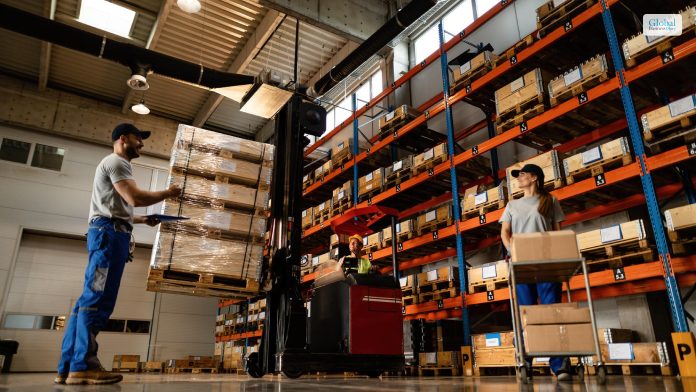How Berkey Water Filters Can Help Businesses Save Money And Improve Employee Health

Imagine ditching expensive bottled water, worrying about tap water quality, and boosting employee health – all with one simple solution. Enter Berkey water filters, a game-changer for businesses seeking cost savings and a healthier workforce.
What Are The Advantages Of Water Filters for Commercial Use
An organization tries its level best to work relentlessly for the benevolence of its employees. Yes, you got it right; it is one of the core objectives of the business organization. It is found from several studies that the employees who are fit physically and mentally perform much better in the organization. One of the great steps in this process is taking care of the water that employees drink.
The employee gives the core time of the entire day at their respective workplace. It has been estimated through different studies that the average employee operates with around 65% of their potential if they are not adequately hydrated. Considering this eye-opening factor, employers must try to arrange for adequate fresh water. However, we discuss some of the advantages of using water filters for commercial use.
So, let’s get started with the discussion!
Less Sick Days
According to a medical observation, around 35% of gastrointestinal illnesses are related to water. When an employee fails to attend office due to stomach-related illness, it increases the load and the problem of the entire team. It also increases the additional stress on the people. Therefore, installing commercial water filters boosts business opportunities while eliminating viruses and harmful bacteria.
Boosting Productivity
According to a study conducted by the Weil Cornel Medical College and research, dehydration, that is, lack of adequate drinking water, is responsible for the increasing afternoon slump. When you dehydrate, you tend to have less energy in your body to work hard. It decreases the individual’s energy in performing the way they usually perform. Installing the commercial water purifier keeps the employees thoroughly energetic, and ultimately, it helps boost their productivity.
Saving Money
Installing commercial water purifiers helps save money for the organization. Prior to installing the commercial water purifiers, you might have been buying them from commercial vendors. But as soon as you install them, you will thoroughly feel the difference from within, especially in terms of the cost. The available water bottles commercially are quite expensive. The water from the purifiers is safer compared to that of the bottles.
It may contain water from different sources that are unhealthy for the employees. This hazardous water can affect the health of the employees. If you run your organization, you must not be compromising with the selection. Large plastic water bottles are a major source of pollution. Therefore, installing Berkey water filters can undoubtedly be safe and secure.
Key Considerations
When purchasing commercial water purifiers for your business organization, you must consider some quality elements and standards. You may be bombarded with different water purification systems available in the marketplace. But before collecting them, you must be mindful of certain elements.
Firstly, you must not compromise the quality of the water. Choosing a commercial RO water purifier will be beneficial. An organization must have zero-tolerance policies toward water quality. Apart from this, some other parameters include brand credibility, certifications, service backups, and others.

Part 1: Quench Thirst, Quench Costs
Bottled Water Blues: The average employee gulps down bottled water, costing businesses a hefty sum. A single Berkey filter, with replaceable filters lasting months, delivers clean water at a fraction of the price. Consider a 50-employee office:
- Bottled water cost: $2 per employee per day = $5000 monthly
- Berkey filter cost: $400 (one-time) + $60 filters (every 3 months) = $720 monthly
That’s an annual saving of $51,600, enough for new office equipment or employee wellness programs!
Beyond Bottles: Forget delivery truck fees and recycling hassles. Berkey filters tap directly into existing water lines, offering convenience and eliminating waste. Plus, say goodbye to expensive maintenance contracts – replacing Berkey filters is quick and affordable.
Tax Time Bonus: Some regions offer tax deductions for businesses investing in employee health initiatives. Research potential tax benefits associated with Berkey filters in your area – consult a tax professional for specifics.
Part 2: Hydrate & Thrive: Healthier Employees, Happier Profits
Hydration Hero: Studies show good hydration enhances employee productivity and overall well-being. Berkey filters go beyond tap water, removing potentially harmful contaminants like lead, chlorine, and fluoride. This can lead to reduced headaches, fatigue, and even long-term health benefits.
Cleaner Water, Clearer Minds: Imagine employees worry-free about water quality, refilling reusable bottles with confidence. Improved peace of mind and reduced health concerns can translate to higher morale, engagement, and reduced absenteeism.
Happy Sips, Happy Employees: Access to clean, filtered water shows employees you care about their well-being, boosting appreciation and satisfaction. Studies link workplace amenities like filtered water to employee happiness and retention, leading to lower turnover costs and a more positive work environment.
Part 3: Your Berkey Journey Starts Here
Addressing Concerns: Worried about the initial cost or filtering speed? While the upfront cost might seem higher, consider the long-term savings and health benefits. Berkey filters also offer various models to suit your office size and water needs. User testimonials and studies highlight their effectiveness and value.
Finding Your Perfect Fit: Berkey offers different filter models, each with varying capacities. A small office might choose the Travel Berkey, while a larger company could benefit from the Big Berkey. Explore their website or consult a distributor for tailored recommendations.
Real-World Impact: Don’t just take our word for it. Businesses across industries are experiencing the Berkey difference. Read customer testimonials and case studies on their website to see how others are saving money and promoting employee health.
Conclusion:
Investing in Berkey water filters isn’t just about clean water; it’s about building a healthier, happier, and more cost-efficient workforce. Take the first step towards pure profits and employee well-being – contact a Berkey distributor today!
Read Also:













